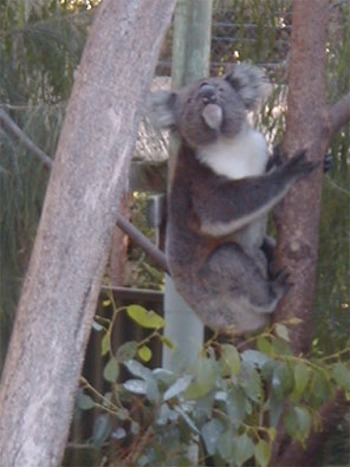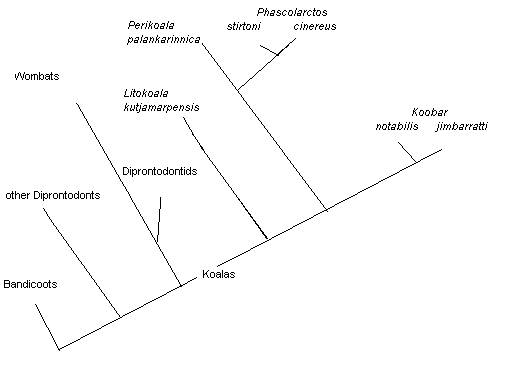| What is it? Scientific Name: Phascolarctos cinereus
Common Name:
Koala, koala bear, native bear
Domain: Eukarya
Kingdom: Animalia
Phylum: Chordata
Class: Mammalia
Infraclass: Marsupialia
Order: Diprotodontia
Family: Phascolarctidae
Genus: Phascolarctos
Species: Phascolarctos
cinereus
Koalas are eukaryotic organisms because their cells contain
organelles and a nucleus. They are members of the animal
kingdom because they are multicellular, heterotrophic, and the
species is capable of locomotion. They have backbones so they
are classified as chordates. They are mammals because they
produce milk to feed their young. They are marsupials because
they carry their young in pouches. The diprodontia
classification comes from the arrangement of the teeth on the jaw
and from the fused second and third digits on its back paw. To be classified in the
family Phascolarctidae, different characteristics of the animal,
including the number and kinds of teeth, along with the number of
digits on the feet were taken into account. It is important to
note that the koala is the only extant member of its family. Koalas were
classified in their genus and species by examining their urinogenital
tract (see diagrams below), spermatozoa, karyotype, and serology, along with the
aforementioned traits. The name Phascolarctos cinereus
literally means ash-colored, leather-pouched bear (Phascolarctos
= leather-pouched bear, cinereus ash-colored).
The name "koala" comes from the Aboriginal word meaning "no drink"
because koalas get most of their water from the eucalypts leaves
that they consume.
|
|
|
|
Who are its relatives?
The phylogenetic tree of the koala shows its closest relatives,
both extant and extinct. The closest living relative to the
koala is the wombat. Other diprontodonts, such as kangaroos,
are still extant but are not as closely related to the koala as the
wombat. All of the other species of koala listed in the phylogenetic tree are extinct.

based off of Lee and Martin pg. 17 |
|
|